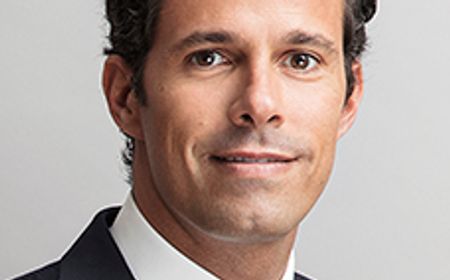Transfer window

Morais Leitão partner Paulo Rendeiro, who has advised on some of European football’s biggest transfers, says that, with the transfer system evolving dramatically, demand for legal advisers is set to increase
 Football transfers are becoming increasingly complex. As such transactions increasingly become subject to larger amounts of regulation, the need for the input of lawyers has never been greater. And one of the leading lawyers in this field is Morais Leitão partner Paulo Rendeiro (pictured). For evidence of his credentials, we need look no further than one of the most expensive transfers of all time – this summer, Rendeiro was part of the Morais Leitão team that advised Portugal forward João Félix on his €126 million move from Benfica to Atlético Madrid, which, at the time of completion, was the fifth most expensive transfer in football history. It was the latest in a number of high profile transfers that Rendeiro has handled – last summer he was part of the Morais Leitão team that advised on Cristiano Ronaldo´s transfer from Real Madrid to Juventus. As the football transfer system evolves, the opportunities for lawyers will increase. The game’s world governing body FIFA is plotting a raft of changes to the way in which football transfers are conducted. As a result, clubs, players, agents and other stakeholders will be calling their lawyers and asking for advice on money laundering risks, national electronic transfer systems, the payment of commissions through a ‘clearing house’ and new rules for player loans. Iberian Lawyer talked to Rendeiro about the potential for a revolution in the way player moves are handled and what work this could generate for law firms.
Football transfers are becoming increasingly complex. As such transactions increasingly become subject to larger amounts of regulation, the need for the input of lawyers has never been greater. And one of the leading lawyers in this field is Morais Leitão partner Paulo Rendeiro (pictured). For evidence of his credentials, we need look no further than one of the most expensive transfers of all time – this summer, Rendeiro was part of the Morais Leitão team that advised Portugal forward João Félix on his €126 million move from Benfica to Atlético Madrid, which, at the time of completion, was the fifth most expensive transfer in football history. It was the latest in a number of high profile transfers that Rendeiro has handled – last summer he was part of the Morais Leitão team that advised on Cristiano Ronaldo´s transfer from Real Madrid to Juventus. As the football transfer system evolves, the opportunities for lawyers will increase. The game’s world governing body FIFA is plotting a raft of changes to the way in which football transfers are conducted. As a result, clubs, players, agents and other stakeholders will be calling their lawyers and asking for advice on money laundering risks, national electronic transfer systems, the payment of commissions through a ‘clearing house’ and new rules for player loans. Iberian Lawyer talked to Rendeiro about the potential for a revolution in the way player moves are handled and what work this could generate for law firms.
What are the typical aspects of a transfer that lawyers advise on?
It really depends on who your client is. If you’re advising a player, you should worry about his employment contract and all related matters. If you’re assisting a club on a transfer your main concern will be the transfer agreement. If, on the other hand, you’re advising the club on the negotiation with the player, your drive should be focused on all aspects connected with the player’s engagement or release, whichever the case may be. Finally, if your client is a football intermediary, you’ll need to concentrate on the representation agreement and, if need be, assist your client on matters related to the registration with the relevant federation.
What are the biggest challenges involved when advising on a football transfer?
Once again, it depends on who you are advising. If you are the player’s legal counsel you should focus on assuring that he understands and is in agreement with all the rights and obligations that derive from the proposed employment contract, in particular the ones which relate to the term, net salary, fringe benefits or other commercial terms, buy-out clause, image rights and further behavioural and social/public relations obligations towards the club. Should your client be the selling club, your focus should be on completing a clean slate termination with the player and/or on assuring that the transfer agreement meets the requirements of the client, especially in relation to the net transfer fee, potential bonuses and/or sell-on fee, payment conditions and guarantees. If, on the other hand, you’re assisting the acquiring club, at the centre of your attention should be putting in place an employment agreement that is in line with your client’s expectations in terms of rights and obligations towards the player and in assuring that the transfer agreement to be executed with the selling club safeguards any and all risks to your client visà-vis its main objective which is securing the player’s federative rights [which include, for example, the right to register a player with the relevant national football body].
Is football-related legal advice a growing area of work? If so, why?
My perception is that the market for football-related legal advice has been growing steadily for the last four or five years. I believe this has been driven by the increasing legal complexity surrounding this industry and also the implementation of certain regulatory measures implemented by UEFA (such as Financial Fair Play) and FIFA (such as regulations on working with intermediaries and prohibition on third-party ownership), which requires some football stakeholders – such as clubs, intermediaries and investors – to seek additional advice in order to ensure that their respective activities are fully compliant with the law and applicable regulations.
In what way are football transfers becoming more sophisticated from a legal perspective?
In my opinion the increase in sophistication derives mainly from the increasing legal complexity and heavy stream of regulations surrounding the football industry, as already noted. To these factors, we should also add the tech element, that is, the inevitable future conversion of many (if not all) procedures associated with football transfers into digital format. We’ll all have to adapt and evolve. I believe this will be crucial in the coming years.
What do you think will be the emerging trends in football from a legal perspective?
Compliance will, of course, continue to be the major issue. Compliance with the regulations and with state laws. Compliance by clubs and players, but also by football intermediaries. It is widely known that FIFA has been talking to stakeholders about a broad reform of the current transfer system, which may include, among other things: the introduction of a clearing house, as a way of achieving an effective and timely redistribution mechanism; assuring central management and oversight of rewards paid to training clubs, and increasing transparency and mitigating money laundering risk; and the mandatory introduction of an electronic transfer system at national level akin to that in place for international transfers, and a domestic electronic registration system. Other reforms that could be introduced include reinforced regulations for intermediaries – which would involve the payment of commissions through the clearing house, and licensing and registration through the TMS system. In addition, there are proposals for new rules regarding player loans – for example, a limitation on the number of loans per season and limitations on loans between the same clubs, and the prohibition of bridge transfers and subloans. Another possible reform would involve a new ‘solidarity contribution’ for domestic transfers with an international dimension. (j.f.)
To read the article in full please download issue N.88 here












